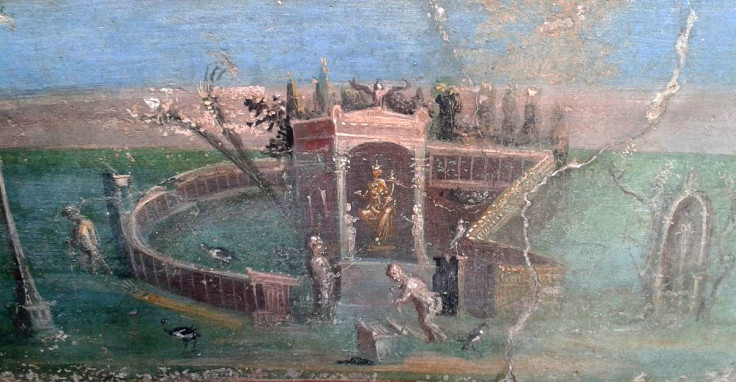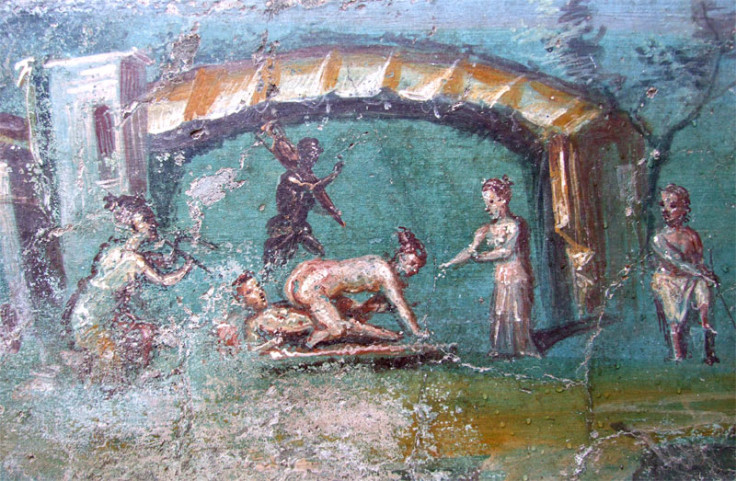Paintings of ancient Egypt in Pompeii garden show just how cosmopolitan the Romans were
There has been much debate about the purpose of these artworks, known as Nilotic landscapes.
The garden of a large ancient house in Pompeii was home to stunning paintings depicting the Nile river flowing among green, lush landscapes. These artworks could shed light on the way the Romans viewed the ancient Egyptian culture, and how they integrated it into their own.
In a study now published online in the American Journal of Archaeology, researcher Caitlin Barrett shows that these "Nilotic scenes" give the Pompeian house a more cosmopolitan feel. They transform it into a microcosm of the Roman civilisation – which at the time had spread all around the Mediterranean, all the way to Egypt.
"Nilotic paintings are one manifestation of a broader phenomenon in Roman culture: a strong interest in things Egyptian. There has been a lot of debate in recent years about why exactly that was. The paintings from the Casa dell'Efebo were created after Egypt was incorporated into the Roman Empire, but several generations after Augustus' initial conquest of Egypt", Barrett, from the Department of Classics at Cornell University, told IBTimes UK.
"Some researchers have turned to explanations emphasising religion: maybe paintings of Egyptian landscapes have to do with an interest in Egyptian gods. Others have interpreted these paintings as political statements: maybe this is about celebrating the conquest of Egypt. I suggest that instead of trying to apply a one-size-fits-all explanation, we should look at context and individual choices".
The Nile river in Casa dell'Efebo
Casa dell'Efebo was among the largest houses in Pompeii. When Mount Vesuvius erupted in 79, burying the city under suffocating clouds of black ash, the house appeared to have been under renovation.
Many of its walls were covered with elegant paintings representing popular Roman mythological and religious themes. Outside in the garden, the archaeologists that excavated the house in the 1920s came across a series of Nilotic frescoes. They depict the Egyptian river and its surrounding landscapes. The paper notes that these artworks "provide examples of practically every motif attested in Roman Nilotic scenes" seen elsewhere.

An abundance of Egyptian fauna and flora is represented – including crocodiles, hippopotamuses and lotuses – with short-statured men sometime depicted in hostile encounters with the wild beasts. Representations of sexual activity, music and alcohol consumption are often central to these paintings.
This study's originality lies in the fact that it attempts to reinterpret the artworks in relation to their surroundings and to the other artefacts found at the Casa dell'Efebo. It finds many examples of how the garden's elaborate architecture, its water installations and the paintings combine to create a kind of idyllic landscape evocative of the larger Roman world at the time - and of its cosmopolitan nature.
"In this particular assemblage, rather than solely trying to make some kind of statement about Isiac rituals or Roman politics, the owner of this house seems to be asserting a cosmopolitan identity as a citizen of the Empire. In Pompeian houses at this time, when people are representing faraway lands in domestic art, they are also trying to figure out what it means to them to be participants in the Roman Empire", Barrett said.

In a period of intense social and political change in the Early Roman Empire, the paintings of the Nile in the Pompeian house provided the inhabitants with an opportunity to engage with shifting local and imperial Roman identities and to recreate a microcosm of the world they lived in.
"People sometimes imagine phenomena like globalisation to be creations of the modern world. In fact, if you look at the Roman Empire there are lots of parallels for some of the cross-cultural interactions that are also very much part of our own contemporary world", the researcher concluded.
© Copyright IBTimes 2025. All rights reserved.





















